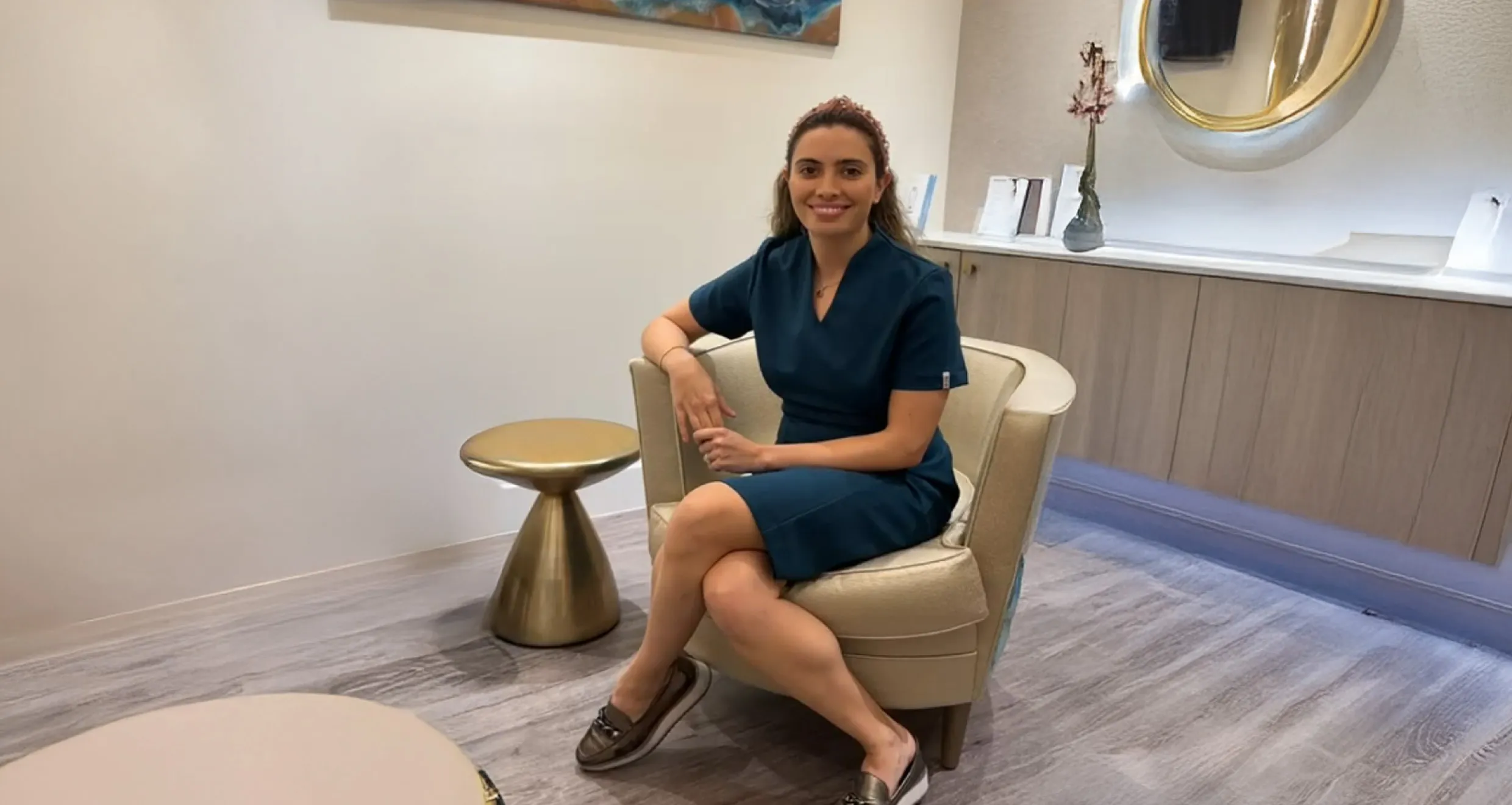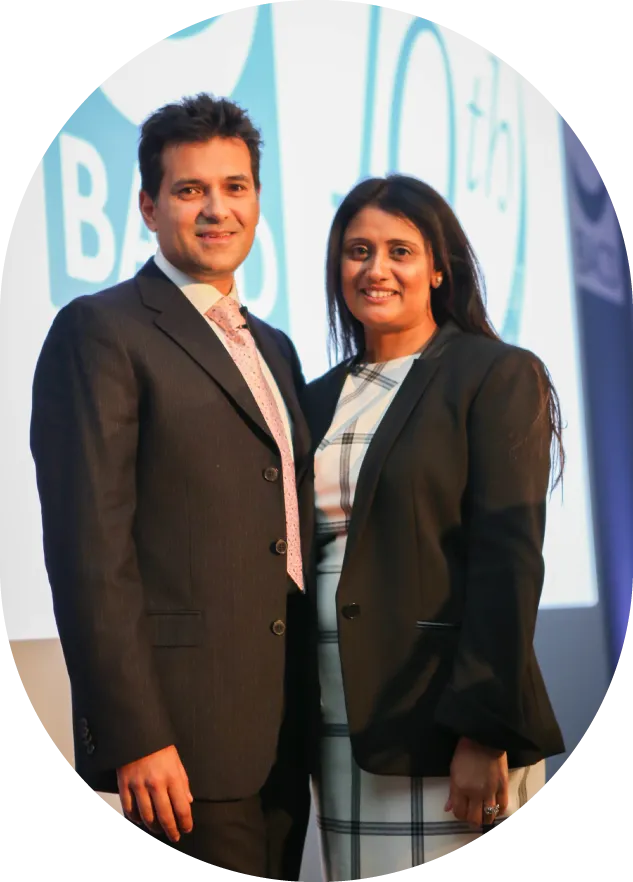
Q: Can you start by telling us why you decided to set up your own practice?
Dr Imogen Bexfield: Setting up our own practice in the Cayman Islands was driven by our desire to fill a gap in the market. The existing dental and aesthetic practices were serving the community in various ways. Still, we sought to introduce a modern, integrated approach to dentistry and aesthetics, combining high-quality clinical work with exceptional patient care. However, while we had strong clinical skills, we realised we were lacking in business acumen. This gap was crucial, especially since we had to self-fund our practice entirely, making failure not an option. That's when we decided to work with DWB, as we needed structured guidance on the business side of things, especially in leadership and team management.
Q: How did you develop a positive culture within your practice?
Dr Imogen Bexfield: One of the biggest takeaways from the DWB program was the importance of creating a positive culture. Initially, we thought positivity would naturally follow if we were positive leaders, but it's more complex than that. DWB taught us structured strategies, like implementing daily positivity focuses and establishing clear core values that the entire team could rally around. These practices have been instrumental in shaping a supportive and cohesive team environment. The positivity focus, for example, encourages everyone to start their day with a positive mindset, which sets a constructive tone for the entire day.
Q: How have your team dynamics improved?
Dr Jonathan Lavington: A pivotal moment was when we faced high staff turnover and low morale. Bhavna advised us to shift our focus from sales targets to strengthening our team culture. We paused all sales-driven meetings and instead concentrated on cultural alignment, discussing our values and how we wanted to interact as a team. This shift made a huge difference; it brought our team closer together and helped us rebuild morale. The simple act of regularly discussing our core values and sharing positive feedback has made our work environment much more supportive and cohesive.
Q: How have you noticed changes in your team's cooperation and unity since implementing these strategies?
Dr Imogen Bexfield: The changes have been remarkable. Initially, some team members were sceptical about the regular meetings and value-focused discussions, thinking they were repetitive. However, as these practices became ingrained, we noticed a significant shift. Team members started to internalise our core values, referencing them in daily interactions and during meetings. This consistency has unified our team, creating a shared language and understanding. It's not just about the words we use but the actions that follow, which have led to a more harmonious and efficient workplace.
Q: How effective have DWB's techniques been in transforming your practice's culture?
Dr Jonathan Lavington: They've been 100% effective, aside from the occasional outlier. The techniques have provided clear guidelines on expected behaviours and how to handle various situations, creating a structured and positive environment. For example, the "Circle of Safety" concept has been crucial in establishing a non-blame culture. This approach has made our team feel safe to express themselves and own up to mistakes, which has significantly improved our operations. It's a system that encourages accountability without fear of retribution, fostering a healthier workplace atmosphere.
Q: Tell me about your leadership style?
Dr Imogen Bexfield: Before DWB, I didn't have a clear understanding of what effective leadership entailed. DWB emphasised the importance of being straightforward, calm, and listening more than talking. This advice has been transformative. For instance, there was an instance where a team member showed signs of disrespect. Bhavna guided me on how to address it calmly and directly without being confrontational. This approach not only resolved the issue but also set a precedent for how we constructively handle conflicts. It has made me more confident in my leadership role, knowing that I can effectively manage difficult situations.
Q: Can you share an example of how increased positivity has impacted your team's productivity and morale?
Dr Jonathan Lavington: One of the most significant impacts of the positive culture we've cultivated is on our team's enthusiasm and productivity. For instance, we share positive patient reviews during our morning meetings. This practice has boosted morale significantly. Team members take pride in these accolades and are motivated to maintain high standards of service. It has also led to practical outcomes, such as better patient retention and increased case acceptance rates, as our team is more engaged and committed to providing exceptional care.
Q: What specific strategies have you used to cultivate a more positive environment in your workplace?
Dr Imogen Bexfield: We've implemented several strategies, including the practice agreement and the concept of blaming the system, not the individual. The practice agreement provides a framework for team interactions, ensuring that everyone understands the expectations and values we uphold. The idea of blaming the system, rather than individuals, when things go wrong has been particularly effective. It shifts the focus from assigning blame to finding solutions, which has made our team more proactive in addressing issues and improving our processes.
Q: How do you manage resistance within your team when introducing new initiatives?
Dr Jonathan Lavington: Interestingly, we haven't faced much resistance, perhaps because our team is relatively young and has been with us since the beginning. They're accustomed to a dynamic environment where change is constant, and they've seen firsthand the benefits of the strategies we've implemented. This openness to change has made it easier to introduce new initiatives. The key has been the integration of a system that enables us to clearly convey the rationale behind each new initiative and how it aligns with our practice's values and goals. Bhavna introduced this foundational initiative early in the program.
Q: What impact has a more positive team culture had on your patient relationships and service quality?
Dr Imogen Bexfield: The impact has been profound. Patients can sense the positive atmosphere in our practice from the moment they walk in. They often comment on how friendly and cohesive our team is, which makes them feel more comfortable and relaxed. This positive environment not only enhances the patient experience but also improves the quality of care we provide. A happier, more cohesive team is more attentive and responsive to patient needs, leading to better outcomes and higher patient satisfaction.
Q: What factors helped you to choose a coach?
Dr Jonathan Lavington: We were drawn to DWB because of its practical, business-focused approach. Unlike other coaching programs that seemed too theoretical or fluffy, DWB offered concrete strategies and tools. Plus, the fact that Bhavna and Rahul Doshi are also a husband-and-wife team who have successfully run multiple practices really resonated with us. They understood our unique dynamics and the challenges of managing a business partnership in a marital relationship. This insight was invaluable for us, as it provided a model for how we could work together effectively while building a successful business.
Q: What are some of the most valuable insights you've gained that have led to tangible improvements in your practice?
Dr Jonathan Lavington: One of the most valuable insights has been the importance of a well-defined patient journey. The new patient tour, for example, has been a game-changer. It's helped us convert aesthetic patients into dental patients and vice versa, significantly boosting our practice's revenue. The comprehensive approach to patient communication, from the initial phone call to follow-up, has also been crucial. It ensures consistency in messaging and reinforces our brand values, which has had a direct impact on patient retention and satisfaction.
Q: How have you made changes to your team workflow when the need arose?
Dr Imogen Bexfield: Bhavna and Rahul's coaching has encouraged us to be more strategic in our team structure. For example, we recently reassigned a team member from the front desk to an assistant role after realising she wasn't thriving in her initial position. This move was guided by the framework we learned from DWB, which emphasises matching team members to roles that align with their strengths and future goals. This adjustment has significantly improved her performance and morale, and by extension, has positively impacted the overall team's confidence in us as their leaders.
Q: What advice would you give to other dental professionals considering coaching?
Dr Jonathan Lavington: My advice would be to go for it. The insights and strategies from DWB can accelerate your career progression and help you manage the inevitable pitfalls effectively. Coaching of this nature and calibre is beneficial if you want to run a successful,patient-centred practice. The coaching has not only helped us improve our business but has also provided us with tools to navigate the complexities of team management and patient care. It's been a pivotal experience for us, and I'm confident that others will find it just as transformative.
Q: Any final thoughts on your vision for the future?
Dr Imogen Bexfield: Our journey with DWB has been incredibly rewarding. I have given us the tools to build a practice that not only excels in clinical excellence but also provides a positive and supportive environment for both our team and our patients. Looking ahead, we're excited to continue growing and evolving, always aiming to deliver the best possible care. The foundation we've built with DWB's guidance has set us up for continued success, and we're grateful for the support and insights we've received from Bhavna and Rahul Doshi.







.svg)

